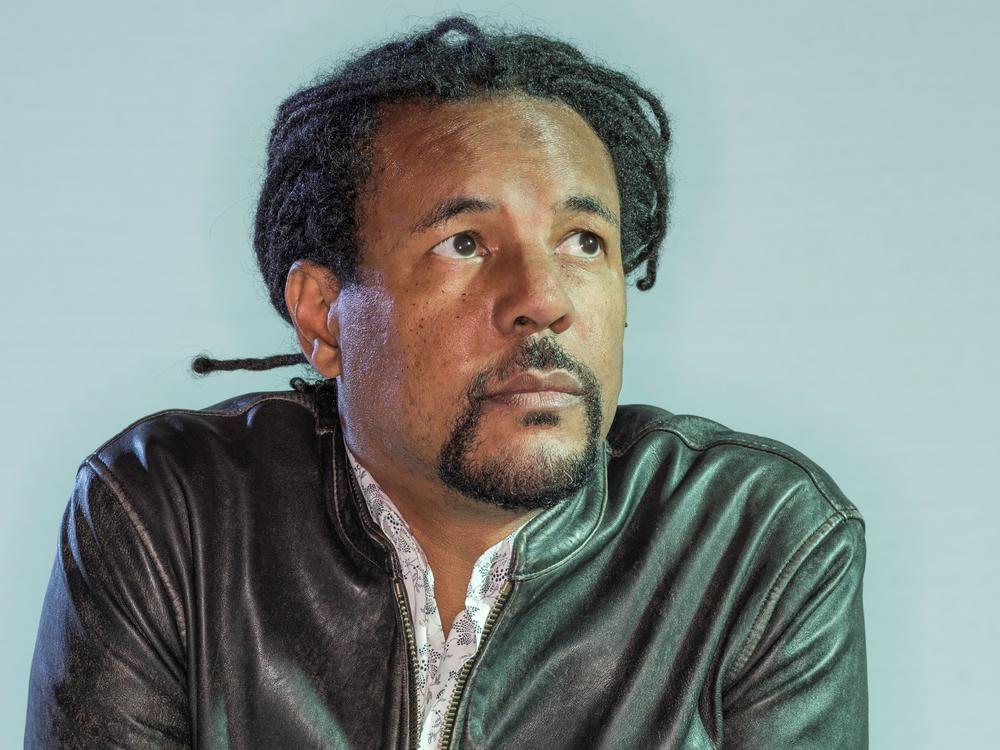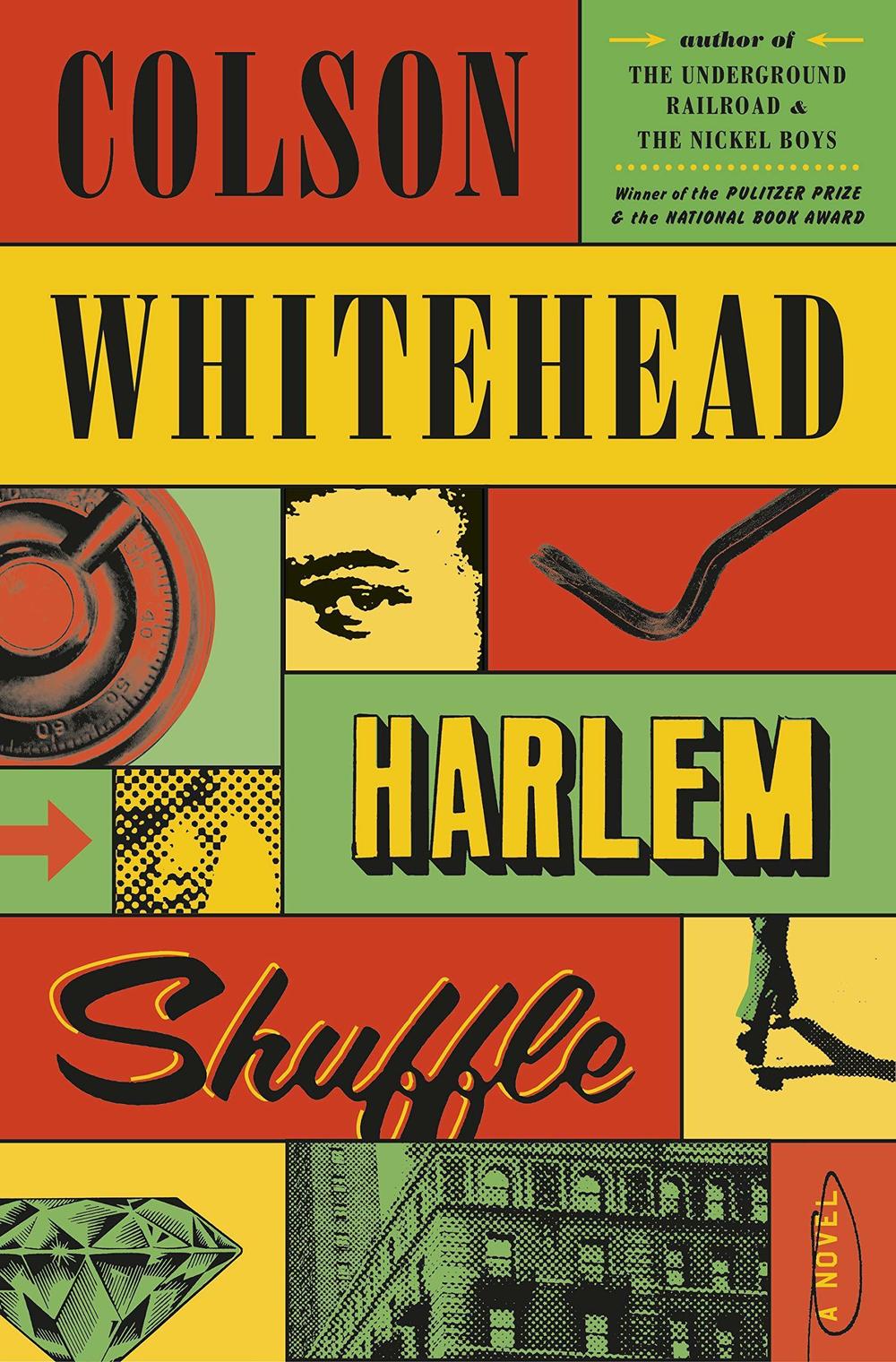Section Branding
Header Content
Colson Whitehead Returns To His Home Turf With 'Harlem Shuffle'
Primary Content
Pulitzer Prize-winning author Colson Whitehead does extensive background research whenever he works on a book. For his latest novel, Harlem Shuffle, that meant learning how stolen items get "fenced."
"There's not a lot of literature about fences," Whitehead says. "But there is actually a book ... [that's] a sociological a study about these guys in the Midwest in the '60s, and one of the first things that struck me was their description of [the fences] being a wall between the straight world and the crooked world."
In Whitehead's novel, the main character, Ray Carney, is that wall. Carney owns a furniture store on 125th Street in Harlem, but he has a sideline trafficking in stolen goods. Whitehead says inspiration for the story came to him a few years back, when he was deciding on a movie to watch.
"I was just thinking about how much I like heist movies and thinking [about] how much fun the directors and writers must have put it all together," he says. "And asked myself ... can I do that?"
Whitehead's two most recent books were historical novels set in the South. The Underground Railroad and The Nickel Boys focused on the brutality of slavery and institutional racism. Writing them back-to-back exacted a heavy emotional toll.
"As I was finishing The Nickel Boys and bringing the boys closer to their tragic fate ... I felt very depressed and depleted," Whitehead says. "I finished the book and then just played video games and barbecued for six weeks and that's how I came back into myself."
Working on Harlem Shuffle was different: "Having fun with this crime genre and some of the supporting cast who are kind of colorful was a relief," Whitehead says. "From the first page of writing the book and getting back into writing a book set in New York, I felt I was on my home turf."
Interview highlights
On choosing to set his heist novel in Harlem between 1959 and 1964
The first thing I thought was [that] crooks might exploit some big New York event. So I tried to think of [ideas]: Should I use the blackout of '77 and then use that for cover for a heist? The riot of the early '40s, which happened when a cop abused a Black person in Harlem? And then I thought, Ralph Ellison kind of owns that because Invisible Man, so I can't really go there. [Then, I thought of] the riot of '64, after a young Black teenager was killed by a white policeman. And so once I had '64, it all flowed from there. And I split up into three sections, 1959, '61 and '64 and try to find different pegs for what's happening in New York that could serve the story.
On learning about "fences" (the people who resell stolen goods)
I decided to have a fence for a hero because I always find it appalling when I watch a heist movie and the criminals have stolen their $2 million in jewels and half the gang is dead and the cops [are] looking for them, and then they go to the fence and the fence says, "I'll give you 10 cents on the dollar." And it's always so appalling and I'm so mad, and I figured that would be a good person to figure out for a book. ...
Things come in stolen, slightly "previously owned" and then they go out into the world ready for the next owner cleaned up. And ... I immediately mapped [that divide] onto Carney's personality. He has this part of himself that wants to leave the life that he grew up in and have a business and go to college and have a nice family. But there is that call in his blood ... and that struggle going back and forth is paralleled by the fence's role and speaks to so much of how I think a lot of us live. I think there are a lot of us who have different parts of us, reconciled, unreconciled, and sometimes that's the drama of our lives.
On how fencing stolen goods works
When I was reading these sociological studies of fences, one thing that was made apparent very early was that they often have fronts, front stores. And so the main guy in this one study reupholstered furniture. In the front of the store, he has these used armchairs that he's refurbished and where does he get them? He goes to the swap meet, and at the swap meet, there's like a rare coin guy over there. And so a criminal has given the fence these jewels and coins and other things to watch, and he'll find other dealers at a swap meet. He'll sell them at his store. But you're connected in this shadowy underground of people who specialize in this or that particular thing. If you put your diamond necklace in the hands of your jewelry connection, that person who has connections to the legit broader marketplace, and so something that is stolen on Tuesday could re-enter the supply chain on Friday. And it's very fluid and the idea of a front, the front that you have out to the world with the sort of bad business in the back is applicable, definitely, to Carney's personality.
On recognizing a front business when he sees one
I still continue to be a failure to know what stores are fronts and what is not. When I lived in Brooklyn ... in the '90s, I would go to the store to buy a six pack of beer and the store is completely empty except for like S.O.S and Brillo pads, two Twinkies and a six-pack of Corona. And I go to pay for the beer and the guy is like, "What are you doing in here? Like, don't you get it?" And so then my friends would tell me, "Oh, that's a weed spot." Like, it's not really legit. So I'm very oblivious.
On tracing the migration of people in Harlem and in his fiction
One hundred fifty years ago, Harlem [was] farmland, and then speculators put up buildings, and then the tenements and townhouses were filled with all these refugees from Europe. And it's Italians and Irish, Jews from all over Europe, and they come to make their way in this new country. They cross the water, they enter the middle class and move away to the suburbs, to downtown different neighborhoods in Manhattan. They're replaced by a wave of Black migration from the South, from the Caribbean. My grandmother came through Ellis Island in 1920, from Barbados.
What I love in doing the research is walking through these different neighborhoods and seeing these old brownstones and townhouses and imagining that churn. I mentioned the churn of stolen goods and out of people's hands. And there is this churn inside these humble townhouses, all those different lives and those different rivers and oceans that they've crossed to come here, and they enter the middle class or they don't. In the same way there's all this the secret history behind the storefronts, the bakeries and crooked stationery stores, it's this whole secret history of these townhouses.
On his 2011 novel Zone One about a plague that turns people into zombies and if COVID made him think about that book again
I was always thinking about it in a very depressing way, just being locked down and remembering this or that passage from the book. But mostly I was angry about the things I didn't get right. The characters in the book are called "sweepers," and they go door to door, retrieving dead bodies and taking out the last of the zombies so that they can restart civilization. So I didn't realize how much toilet paper they would find when they went into these different folks' apartments. So that was a failure of my imagination.
And then secondly, I had no idea that people would say, "Oh, the zombie virus is just like the flu. It doesn't really matter," or "I'm not going to get the zombie vaccine," the depths of the denial and psychosis around vaccines I couldn't foresee. So if I did it over again, definitely there'll be people who would resist the zombie vaccine and suffer the consequences, which would be unfortunate.
Sam Briger and Seth Kelley produced and edited this interview for broadcast. Bridget Bentz, Molly Seavy-Nesper and Natalie Escobar adapted it for the Web.
Copyright 2021 Fresh Air. To see more, visit Fresh Air.


